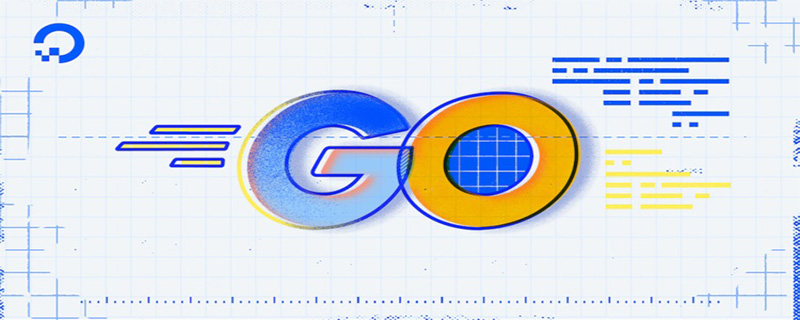From 2015 to 2017, Bitcoin went through a well-known block size war. This was a key conflict in Bitcoin's history, as hardliners argued over what was the right scaling strategy for the Bitcoin network, one that would ensure the network could scale over time to accommodate continued growth. needs.
The two sides of the debate are "BigBlockers" (big blockists) and "SmallBlockers" (small blockists).
BigBlockers advocates increasing the original size of Bitcoin blocks from 1MB to 8MB. This will increase the throughput of Bitcoin transactions by 8 times while reducing transaction costs.
SmallBlockers advocates keeping the block size smaller, believing that increasing the block size will harm the decentralized nature of Bitcoin and make the Bitcoin blockchain unusable for ordinary users. Verification is more challenging.
An alternative path called SegWit (Segregated Witness) was eventually proposed that optimizes the number of transactions a single block can accommodate without directly increasing the block size. SegWit will also open the door to scaling solutions outside of the core Bitcoin protocol, namely Layer 2 extensions.
To fully emphasize these points, SmallBlockers hopes to scale in two ways:
Increase block density, allowing for inclusion within the same space More deals.
Opens the door to layered scaling strategies and creates space for practical off-chain scaling solutions.
So, the debate is: should we increase the block size? Or should we maintain a certain block size and force expansion to higher layers?
1. Current status of BigBlockers and SmallBlockers
The debate over block size has been enduring in the history of encryption development and continues to this day.
We no longer call these factions BigBlockers or SmallBlockers; today, people find more relatable modern factions, often defined by a specific L1. However, the different ideals expressed by the two camps can be seen in the culture and belief systems of each L1 camp, whether they know it or not.
Today, the debate between SmallBlockers and BigBlockers is reflected in the dispute between Ethereum and Solana.
The Solana camp points out that Ethereum is too expensive and too slow to bring the world on-chain. Consumers won’t use cryptocurrencies unless transactions are instant and free, and we need to design L1 to have as much capacity as possible.
The Ethereum camp stated that this is a fundamental compromise on decentralization and trusted neutrality. Winners and losers are set and will ultimately produce the same results as we are trying to get rid of. of the same social financial stratification. We should focus on increasing the density and value of L1 blocks and force expansion to L2s.
This controversy is nothing new. The crypto landscape is constantly changing, adapting, and evolving, but the debate over the idea of small blocks versus big blocks remains the same.
2. Complex blocks and original blocks
The biggest innovation of Ethereum from 0 to 1 is the addition of a virtual machine to the blockchain. All previous chains to Ethereum lacked the key element of a virtual machine, attempting to add single opcode functionality rather than a fully expressive virtual machine.
Early Bitcoiner concepts did not agree with this choice because it increased the complexity of the system, expanded the attack surface, and increased the difficulty of block verification.
Although both Bitcoin and Ethereum are "small block" chains, the expansion of the scope of virtual machines has still created a huge wedge between the two communities. To this day, you can clearly see the divisions between some of the larger camps of modern blockchain ideas.

While this view is likely to be mired in 2024, I think these four L1 blockchains occupy four different types of valid logic in the L1 architecture in conclusion.
Bitcoin is highly constrained and limits L1 performance at all costs.
Ethereum is heavily constrained on L1, but the new L1 performance is to create room for unconstrained block supply on L2s.
Celestia limits its L1 performance but maximizes its capacity, forcing more features to be pushed to L2 but giving them maximum room to build (this is "BuildAnything" The origin of this motto).
Solana is super untethered, maximizing the capacity and functionality of L1 while limiting the ability to build higher layers.
3. Functional Escape Velocity
My crypto investment point of view is that blockchains that incorporate the concepts of small blocks and large blocks in their design will eventually win crypto game of Thrones.
There is nothing wrong with SmallBlockers and BigBlockers. They all have their own opinions. There is no point in arguing about who is right and who is wrong - the point is to have a system that maximizes both.
The Bitcoin architecture cannot meet the needs of both BigBlockers and SmallBlockers. Bitcoin SmallBlockers claims that the expansion will occur at Layer 2s, and they pointed out the Lightning Network to BigBlockers as a way out, while allowing them to remain Bitcoiners in the Bitcoin system. However, due to the feature limitations of Bitcoin L1, the Lightning Network was unable to gain support and momentum, and Bitcoin BigBlocers had nowhere to go.
In 2019, Vitalik published an article titled "Base Layer and Functional Escape Velocity", which elaborated on the same situation and advocated minimally increasing the functionality of L1 to produce practical L2s.
"Although L1 cannot be too powerful, because more powerful functions mean greater complexity, which also means greater vulnerability, L1 must be powerful enough to make the L2 that people want to build protocol is truly possible."
"Keep L1 simple and make up for it on L2" is not a universal answer to the problem of blockchain scalability and functionality because it does not take L1 blockchains into account. It must itself be scalable and functional enough to make "building on top of it" possible.
My conclusion is:
In order to ensure that L2s can achieve the "functional escape velocity", we need to expand the scope of the L1 block to "maximize small blocks" outside. We need block complexity.
We should not increase the scope of L1 blocks beyond the point where "L2 functional escape velocity" is achieved, as this unnecessarily compromises the decentralized nature and trustworthiness of L1 neutrality. Any additional L1 utility can be pushed to L2s. We should keep the small block philosophy.
This is also a compromise between both parties. SmallBlockers must accept that their blocks become more complex and (slightly) harder to verify, while BigBlockers must accept a layered scaling approach.
Once the compromise is consistent, the synergy will blossom and bear fruit.

4. Ethereum L1—the root of trust
Ethereum is the root of trust.
Ethereum L1 maintains its small block philosophy by leveraging cryptographic advances to generate higher levels of functional escape velocity. By receiving proofs of fraud and proofs of validity from higher layers, Ethereum can effectively compress infinite transactions into an easily verifiable transaction package, which is then verified by a decentralized network of consumer hardware.
This design architecture retains the crypto industry’s fundamental commitment to society. Ordinary people can check and balance the power of experts and elites. Everyone has equal access to the system. No one is privileged. No one is a guaranteed winner.
The crypto industry made a conceptual promise, and Ethereum turned that concept into reality through cryptographic research and old-fashioned engineering techniques.
Imagine that small blocks are at the bottom and large blocks are at the top. In other words, L1 is a decentralized, trustworthy, neutral, consumer-verifiable block, while highly scalable, real-time, Low-cost transactions are conducted on L2s!
Ethereum does not look at the concept of small blocks and large blocks from a horizontal perspective, but flips it vertically and builds a large block structure based on secure and decentralized small blocks.

Ethereum is the small block anchor of the big block universe.
Ethereum supports thousands of large block networks to flourish, and synergy blossoms from a coherent, composable ecosystem rather than forming numerous L1 fragments.
5. Cosmos: The Lost Tribe
So, what role does Cosmos play in this debate? Cosmos does not insist on strict compliance with network design. After all, there is no “Cosmos” network yet—Cosmos is still just a concept.
This concept is the Internet of sovereign chains. Each chain has maximum, uncompromising sovereignty and is able to be held together to some extent by sharing technical standards that abstract their complexity to a certain extent.

#The problem with Cosmos is that it is so fundamentally committed to service sovereignty that the Cosmos chain cannot coordinate and organize itself well enough to share each other’s successes. Excessive indexation of sovereignty will cause excessive confusion and is not conducive to the expansion of the Cosmos concept. Maximizing sovereignty accidentally optimizes anarchy. Without a central coordinating structure, Cosmos remains a niche concept.
6. Sovereign escape velocity
Similar to Vitalik’s concept of “functional escape velocity”, I think there is also a “sovereign escape velocity” phenomenon. For the Cosmos concept to truly take root, it requires small compromises in network sovereignty to maximize its potential.
The Cosmos concept and the vision of Ethereum L2 are basically the same. A horizontal pattern consisting of independent, sovereign chains that are free to choose their own destiny.

The core difference is that Ethereum L2s compromises a certain degree of sovereignty to Ethereum L1 by publishing its state root on the L1bridge contract. This small change externalizes previously internal operations by selecting the central L1 to settle their native bridge.
Extending L1’s security and settlement guarantees through cryptographic proofs, countless L2s born based on Ethereum functionally become the same global settlement network. This is the flower of the extraordinary synergy between small block and big block concepts.
(1) Synergy 1: Chain Security
L2 chains do not have to pay for their own economic security, they eliminate a large number of sources of network inflation from their underlying assets, and in their respective tokens Annual inflation of 3-7% is retained in the value.
Take Optimism as an example: assuming its $14 billion FDV and 5% annual security budget, that’s $700 million annually that it doesn’t have to pay to third-party external security providers. In fact, the Optimism mainnet paid $57 million in gas fees to Ethereum L1 last year, a metric measured before the release of 4844, and reduced L2 fees by over 95%!
Economic security costs drop to zero, making DA (data availability) the only meaningful ongoing operating cost for L2 networks. Since the DA cost is also close to zero, the net cost of L2s is also close to zero.
By creating sustainability for L2s, Ethereum can release as many chains as market demand creates, creating more sovereign chains than the Cosmos model can produce.

(2) Synergy 2: Composability
The customer acquisition cost of L2s also becomes marginal because L1’s crypto-proof settlement provides Reliable link between all L2s. By retaining the settlement guarantee of L1, users can easily travel between L2. But service providers that provide chain abstraction services (bridges, intent fillers, shared sequencers, etc.) can provide more powerful services if they have uncompromising security guarantees on the foundation upon which their business is built.
Additionally, as many L2s come online, each L2 attracts its own edge users into the larger Ethereum ecosystem. Since all L2s bring their users into Ethereum, the total number of Ethereum users will become larger as the network grows, making it easier for edge L2s to find enough users.

Ethereum has been criticized for being “fragmented”, ironically the opposite is true as Ethereum is the only one that stitches together other sovereign chains via cryptographic proofs Network together. In contrast, many L1 areas are completely fragmented, while Ethereum's L2 area only has fragmentation issues in terms of latency.
(3) Synergy 3: Accounting unit
All advantages are concentrated on the Schelling point of ETH assets. The more network effects surround the Ethereum ecosystem, the stronger the tailwinds for ETH as a currency will be.
ETH becomes the unit of account for all its L2 networks, with each L2 network generating economies of scale by centralizing security onto Ethereum L1.
7. Conclusion
The Ethereum project is pursuing a single unified architecture that encompasses the broadest set of possible use cases. This is a one-stop network.
The combination of small but powerful L1 is the foundation needed to open up the maximum possible design space on L2s. One of the sayings of early Bitcoiners is: "Useful things will eventually be built on Bitcoin." I completely believe this statement. Especially for the Ethereum network, this is exactly what Ethereum is optimized for.
The value of protecting the crypto industry happens at L1.
Decentralized, censorship-resistant, permissionless and trusted neutrality. If these can be held on L1, then they can be functionally scalable to an unlimited number of L2s that can cryptographically bind themselves to L1.
The core supporting argument for Ethereum in the crypto power game is that any Alt L1 can be better built as an L2, or as a feature set integrated into the L1.
In the end, everything will become branches on the Ethereum tree.
The above is the detailed content of Bitcoin block size debate and Ethereum's road to unified architecture. For more information, please follow other related articles on the PHP Chinese website!
 区块链只能用go语言吗Dec 27, 2022 pm 05:25 PM
区块链只能用go语言吗Dec 27, 2022 pm 05:25 PM不是。区块链是一种编程思想,原则上使用任何一种编程语言都可以实现,比如Solidity、C++、C#、Java、javascript、Go都可以实现区块链的开发;区块链技术涉及的面很广,而编程语言只是一种手段,把设计理念用代码呈现出来,做成产品服务用户。
 什么是OCO订单?Apr 25, 2023 am 11:26 AM
什么是OCO订单?Apr 25, 2023 am 11:26 AM二选一订单(OneCancelstheOther,简称OCO)可让您同时下达两个订单。它结合了限价单和限价止损单,但只能执行其中一个。换句话说,只要其中的限价单被部分或全部成交、止盈止损单被触发,另一个订单将自动取消。请注意,取消其中一个订单也会同时取消另一个订单。在币安交易平台进行交易时,您可以将二选一订单作为交易自动化的基本形式。这个功能可让您选择同时下达两个限价单,从而有助于止盈和最大程度减少潜在损失。如何使用二选一订单?登录您的币安帐户之后,请前往基本交易界面,找到下图所示的交易区域。点
 为什么用go语言写区块链Mar 04, 2021 pm 03:42 PM
为什么用go语言写区块链Mar 04, 2021 pm 03:42 PM原因:1、Go语言具有部署简单、性能优秀、并行执行性能好、良好语言设计、内置大量库、团队牛逼等优势。2、以太坊和超级账本都选择使用Go作为开发语言;这两大超级区块链的影响力很大,不仅在生态中占据了大的坑位,事实上还隐性的制定了区块链的标准。
 go语言能开发区块链吗Jan 03, 2023 pm 01:41 PM
go语言能开发区块链吗Jan 03, 2023 pm 01:41 PM可以开发。区块链是一种编程思想,原则上使用任何一种编程语言都可以实现,比如go语言、Solidity、C++、C#、Java、javascript都可以实现区块链的开发。Go语言是为了解决分布式计算,而区块链是典型的分布式数据存储系统,因此go语言能开发区块链。且Go易学易用,能很好的满足区块链行开发需要的“执行效率高、高并发、跨平台,网络开发要求高”等特点。
 深入学习区块链的Go语言开发框架Jun 04, 2023 pm 08:01 PM
深入学习区块链的Go语言开发框架Jun 04, 2023 pm 08:01 PM区块链技术的出现,使得数字货币的应用成为可能,也在许多领域得到了广泛应用。随着区块链技术领域的扩大,开发人员对于更好的应用程序编写方式的需求也高涨起来。于是,一个叫做Go语言(简称Golang)的编程语言悄悄兴起,成为了区块链开发人员的最爱。Go语言是谷歌公司开发的一种系统级编程语言,自诞生以来,一直着重强调程序设计的简捷和高效。Go语言的优点包括:静态类型
 打造高效的区块链技术开发环境(使用Go语言)Jun 05, 2023 am 08:21 AM
打造高效的区块链技术开发环境(使用Go语言)Jun 05, 2023 am 08:21 AM随着区块链技术的发展和应用越来越广泛,有越来越多的人开始参与到区块链技术的开发中来。而要想打造高效的区块链技术开发环境,选择合适的开发语言和工具是非常重要的。Go语言正是一个很好的选择,因为它的性能很高,同时还有很多优秀的开源工具和库,能够大大提高开发效率。下面就来介绍一下如何打造高效的区块链技术开发环境,使用Go语言进行开发。一、选择Go语言在选择开发语言
 Java 中的区块链和加密货币技术Jun 09, 2023 am 09:56 AM
Java 中的区块链和加密货币技术Jun 09, 2023 am 09:56 AMJava是一种广泛使用的编程语言,它被许多公司和组织用作开发各种应用程序的工具。最近几年来,区块链和加密货币技术在全球范围内引起了大量的关注。Java的灵活性和多功能性使得它成为开发区块链和加密货币应用程序的优秀选择。区块链技术是一种安全的、去中心化的数据库,它可以存储和共享交易记录,而无需任何中央机构的干涉。Java提供了许多区块链开发框架,例如H
 如何利用Go语言实现全球唯一的区块链身份标识Jun 04, 2023 pm 03:51 PM
如何利用Go语言实现全球唯一的区块链身份标识Jun 04, 2023 pm 03:51 PM区块链是一种去中心化的分布式账本技术,随着其应用领域的不断扩展,如何保障区块链参与者的身份安全问题也逐渐成为热门话题。本文将介绍如何利用Go语言实现全球唯一的区块链身份标识。一、为什么需要区块链身份标识在现有的互联网世界中,身份验证是一个非常重要的问题。通过用户名和密码等方式,用户可以登录到我门的网站上,从而使用我们的服务。但是,在互联网上,身份验证存在着

Hot AI Tools

Undresser.AI Undress
AI-powered app for creating realistic nude photos

AI Clothes Remover
Online AI tool for removing clothes from photos.

Undress AI Tool
Undress images for free

Clothoff.io
AI clothes remover

AI Hentai Generator
Generate AI Hentai for free.

Hot Article

Hot Tools

SAP NetWeaver Server Adapter for Eclipse
Integrate Eclipse with SAP NetWeaver application server.

Dreamweaver Mac version
Visual web development tools

ZendStudio 13.5.1 Mac
Powerful PHP integrated development environment

Atom editor mac version download
The most popular open source editor

SublimeText3 Linux new version
SublimeText3 Linux latest version







